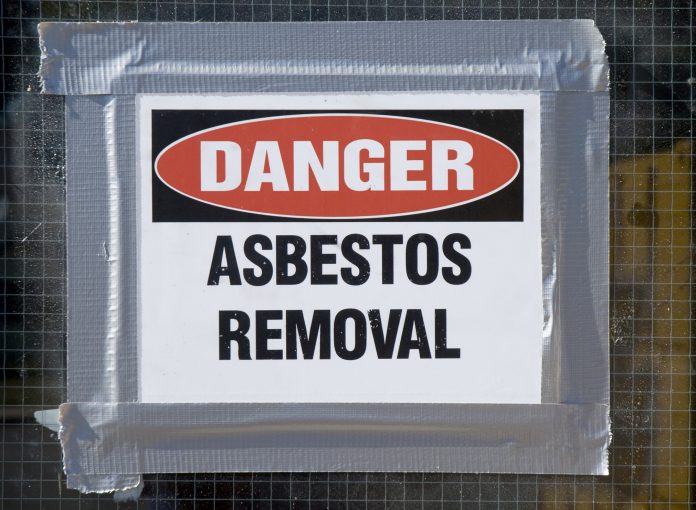The latest Health and Safety Executive advice is that schools should identify, protect and manage asbestos-containing materials. Planning and Building Control Today assesses the current thinking.
In 2013, the Committee on Carcinogenicity (CoC) confirmed that children are more vulnerable to asbestos exposure than adults, as they have a longer time for an asbestos disease to develop. Figures suggest that the lifetime risk of developing mesothelioma for a 5 year old child is about 5 times greater than an adult aged 30.
In light of the findings from the CoC, the Department for Education (DfE) pledged to review its policy by launching the consultation: Asbestos management in schools: DfE policy review.
The consultation sought to hear from those involved in the day-to-day management of asbestos in schools about how effective current guidance is, how it is being managed, what the barriers are to effective management, and how it can better support schools.
Around 75% of UK state schools contain asbestos and more than 140 school teachers have died from the asbestos cancer mesothelioma in the past 10 years.
Campaigners such as the Joint Union Asbestos Committee (JUAC) have been calling for a full audit of the schools estate to establish the condition of asbestos-containing materials. They also want to see a programme to remove completely all asbestos. As Julie Winn, Chair of JUAC said in the April edition of Planning and Building Control Today:
“The only long-term solution to preventing exposure to the chemical in schools is a strategic national plan for the phased removal of asbestos with priority being given to the most dangerous types. Other countries have recognised the problem of asbestos in public buildings and have committed to a long term policy of phased removal. We believe that a phased removal of it from schools should be adopted as national policy in the UK and if this action is not taken, then it will remain a problem in schools indefinitely.”
Current government policy however, based on Health and Safety Executive (HSE) advice is that schools should identify, protect and manage asbestos-containing materials (ACMs), rather than remove them (the findings are outlined below). It is thought that the cost alone of removing all asbestos from schools prevents the government from taking action.
Speaking at the time of the CoC’s finding last year, chair of the Asbestos in Schools campaign group Annette Brooke MP, said:
“The Department for Education must publish a strategic plan involving an audit of school buildings and an assessment of the risks. Over a period of time the plan must aim for the removal of the most dangerous asbestos materials.”
As we finalise this issue of Planning and Building Control Today, the DfE are yet to publish the results of the consultation, however, in June, the Health and Safety Executive (HSE) announced their results of asbestos management in schools inspections which took place between April 2013 and January 2014. The randomly selected sample of 153 non-local authority schools also included independent, voluntary aided and foundation schools, free schools and academies. The aim of the initiative was to assess the level of compliance with The Control of Asbestos Regulations 2012 (CAR) which places duties on those who have responsibilities for the maintenance of work premises, including schools, to manage the risk from asbestos.
Overall, the HSE found the duty holders’ awareness of their legal responsibilities was 9% higher than the level found in the 2010/11 inspection programme, with 95% of schools having a full or broad understanding of the requirements.
The majority of schools that were inspected (71%) required either no further action or were given straightforward advice. However, 44 schools (29%) received written advice, with enforcement action taken in 20 of these schools (13%) – an Improvement Notice was served on each of these 20 schools.
In 2010/11, HSE served 41 Improvement Notices on 28 schools (17% of the schools visited). Geoff Cox, the Head of HSE’s Public Services Sector, said:
“Over the last few years there has been a lot of work by stakeholders across the school sector to raise awareness of the duty to manage asbestos. It is really encouraging to see that awareness of the requirements has increased since our previous inspection initiative.
“That said, schools should not be under any illusion – managing the problem requires ongoing attention. Schools now have access to a wealth of guidance setting out clear and straightforward steps to achieve and maintain compliance.
“Where duty holders fall below acceptable standards, HSE has taken, and will continue to take, enforcement action”
Key findings
The results of these inspections should make clear to schools that managing the issue requires ongoing attention. The HSE say that schools should focus particular attention on the following issues:
Schools should make sure that their records are up to date. The management survey is an essential part of these records – its purpose is to locate ACMs that could be damaged or disturbed by normal activities, by foreseeable maintenance, or when installing new equipment.
Schools must have a management plan. Where the status of a school changes from local authority control, the management team needs to be fully conversant with the plan and should satisfy itself that local knowledge has been incorporated.
Schools must ensure that in-house operatives undertaking building and maintenance work have received adequate asbestos training. Equally, dutyholders should ensure that they only use contractors that are trained to a sufficient standard.
Schools must have a system to inform anyone who may disturb ACMs of the presence of asbestos. Methods commonly used include permit-to-work systems, labelling ACMs clearly, and providing a plan with the locations of all ACMs marked on it.
The HSE results clearly leave the emphasis on the requirements for managing asbestos in line with compliance with CAR. I am sure I’m not alone in eagerly awaiting the outcome of the DfE consultation which may yet pave the way for a strategic national plan for the phased removal of asbestos. ■
A full list of schools inspected by the HSE and the results of the inspection is available online at:
http://www.hse.gov.uk/services/education/asbestos-management-1314.htm
. . . . . . . . . . . . . . . . . . . . . . . . . .
Adjacent Planning and Building Control Today
editorial@adjacentgovernment.co.uk














